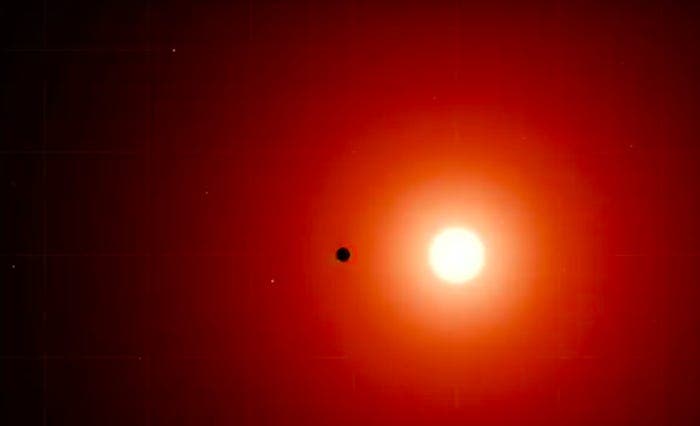
A team of researchers announced on January 6 that NASA’s Transiting Exoplanet Survey Satellite (TESS) discovered its first Earth-sized planet which has the possibility to harbor oceans. The same day, it was also revealed that she had found her first circumbinary planet, a world orbiting two stars.
Coined TOI 700 d (TOI is short for “Tess Object of Interest”), the exoplanet is located 101.5 light-years away and is one of only a few Earth-sized worlds discovered in its star’s habitable zone so far. The discovery was confirmed by NASA’s Spitzer Space Telescope.
TESS monitors large swaths of the sky, called sectors, for 27 days at a time. This long stare allows the satellite to track changes in stellar brightness caused by an orbiting planet crossing in front of its star from our perspective, an event called a transit.
The telescope, which launched in April 2018, hunts for planets using the “transit method,” where it looks for telltale dips in stellar brightness that is caused by orbiting worlds crossing their parent stars’ faces from the satellite’s perspective. This was the same strategy used by NASA’s Kepler space telescope, which discovered about 70 percent of the roughly 4,000 known exoplanets.
“TESS was designed and launched specifically to find Earth-sized planets orbiting nearby stars,” said Paul Hertz, astrophysics division director at NASA Headquarters in Washington. “Planets around nearby stars are easiest to follow-up with larger telescopes in space and on Earth. Discovering TOI 700 d is a key science finding for TESS. Confirming the planet’s size and habitable zone status with Spitzer is another win for Spitzer as it approaches the end of science operations this January.”
TOI 700 d was one of three planets discovered orbiting the star TOI 700. It is the outermost known planet in the system and the only one in the habitable zone. It’s 20 percent larger than Earth, orbits every 37 days and receives from its star 86 percent of the energy that the Sun provides to Earth. The innermost planet discovered, TOI 700 b, is roughly Earth-sized and completes a full orbit every 10 days. The center planet, TOI 700 c, is 2.6 times bigger than Earth, meaning it’s likely a gassy “mini-Neptune,” and circles TOI 700 every 16 days.
TOI 700 is a small, cool M dwarf star located just over 100 light-years away in the southern constellation Dorado. It measures roughly 40 percent of our Sun’s mass and size and has about half its surface temperature. The star appears in 11 of the 13 sectors TESS observed during the mission’s first year, and scientists caught multiple transits by its three planets. It was originally misclassified in the TESS database as being more similar to the Sun, which meant the planets appeared larger and hotter than they really are.
“When we corrected the star’s parameters, the sizes of its planets dropped, and we realized the outermost one was about the size of Earth and in the habitable zone,” said Emily Gilbert, a graduate student at the University of Chicago.
Normally planets which orbit red dwarfs like TOI 700 aren’t a good place to look for life due to powerful flares from the star which will generally fry a planet’s atmosphere. However, TOI 700 d seems to be an exception to this norm. It is also tidally locked, which means that one side is always in daylight.
“In 11 months of data, we saw no flares from the star, which improves the chances TOI 700 d is habitable and makes it easier to model its atmospheric and surface conditions,” said Gilbert.
Because TOI 700 is bright, nearby, and shows no sign of stellar flares, the system is a prime candidate for precise mass measurements by current ground-based observatories. These measurements could confirm scientists’ estimates that the inner and outer planets are rocky and the middle planet is made of gas.

This comes on the heels of the detection of water vapor in September 2019 on a potentially habitable planet for the first time. This planet, called K2-18b and discovered by the Kepler telescope, is a super-Earth that orbits a red dwarf star 110 light-years away. K2-18b is the only known exoplanet with water vapor, an atmosphere, and a temperature range that could support liquid water on its surface.
The other first for TESS was the discovery of planet TOI 1338 b which resides in the system TOI 1338, 1,300 light-years away in the constellation Pictor. The two stars there orbit each other every 15 days. One is about 10 percent more massive than the Sun, while the other is cooler, dimmer and only one-third the Sun’s mass.
TOI 1338 b is the only known planet in the system. It’s around 6.9 times larger than Earth, or between the sizes of Neptune and Saturn. The planet orbits in almost exactly the same plane as the stars, so it experiences regular stellar eclipses.
Planets orbiting two stars are usually harder to detect than those orbiting just one. TOI 1338 b’s transits are irregular, between every 93 and 95 days, and vary in depth and duration thanks to the orbital motion of its stars. TESS only sees the transits crossing the larger star; the transits of the smaller star are too faint to detect.
Future missions may be able to identify whether the TESS’s discoveries have atmospheres and, if so, even determine their compositions.


